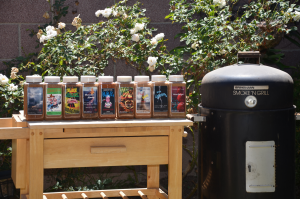Description
Domestic Paprika is a ground spice made from dried red fruits of the larger and sweeter varieties of the plant Capsicum annuum, called bell pepper or sweet pepper. The most common variety used for making paprika is tomato pepper, sometimes with the addition of more pungent varieties, called chili peppers, and cayenne pepper. The peppers used in making paprika originate from North America, in particular Central Mexico, where they have been cultivated for centuries.
The peppers were subsequently introduced to the Old World, when peppers brought to Spain and Portugal in the 16th century. The seasoning is used to add color to many types of dishes in diverse cuisines. The trade in paprika expanded from the Iberian Peninsula to Africa and Asia,:8 and ultimately reached Central Europe through the Balkans, then under Ottoman rule, which explains the Hungarian origin of the English term.
Description:
Sweet paprika is mostly composed of the pericarp, with more than half of the seeds removed, whereas hot paprika contains some seeds, stalks, placentas, and calyces:5, 73 The red, orange or yellow color of paprika is due to its content of carotenoids Peppers, the raw material in paprika production, originated from North America, where they grow in the wild in Central Mexico and have for centuries been cultivated by the peoples of Mexico. The peppers were later introduced to the Old World, to Spain in the 16th century.
Usage:
In Spanish, paprika has been known as pimentón since the 16th century. Then it became a typical ingredient in the cuisine of western Extremadura. Despite its presence in Central Europe since the beginning of Ottoman conquests. It did not become popular in Hungary until the late 19th century. Paprika can range from mild to hot, the flavor also varies from country-to-country, but almost all plants grown produce the sweet variety.
Domestic Paprika is a mellow ingredient, bringing beautiful color and a hint of sweetness. You’ll find it in everything from barbecue sauce, prepared rubs and marinades. Some even use it in Italian sausage, potato casseroles, cream sauces. and egg dishes. Some even love it sprinkled on mac and cheese.
To maintain freshness, this spice is shipped in glass bottles. That’s because glass jars can preserve the freshness of spices for up to 2 years. Glass is an awesome option for storing spices because it doesn’t react to ingredients, unlike plastics and wood. Glass doesn’t typically conduct heat and you can see what’s inside to keep track of inventory.
This spice is additive and preservative free !!!!
Shipped directly from our store to your door…….
“Life’s Good When You’re Cookin Wit’ Gus”









Reviews
There are no reviews yet.